Individual vs. Collective | embodiment, relationality and interconnection
- rubysleigh
- Jun 20, 2020
- 8 min read
Updated: Aug 20, 2020
The Liminal
This or that?
Here or there?
Together or alone?
If everything has to be so defined, so bounded, so black and white then where is the place of all those shifting, undefinable greys?
Or the murky, messy browns?
For aren’t we all somehow grey?
Instead of absorbing all,
Or deflecting every beam;
The more you look, the more that swampy murky mess, neither flowing water nor solid ground,
Becomes the glorious space of the unknown.
Unboxed and unrecognisable.
Evasive and elusive.
Intertwined, inseparable,
Dependent, unsupported, needy, tangled, Confusing, Unidentifiable, MAD, hysterical…
Out of control, impossible to rationalise.
Well that swamp you know the least, offers the most fertile space to grow
- 2020
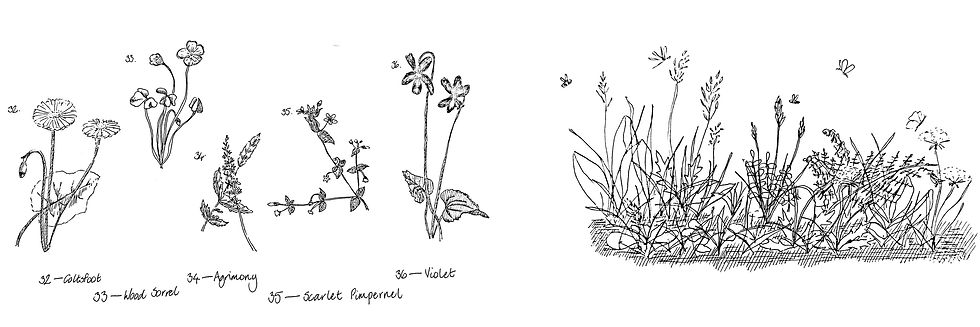
Plants and animals are so often studied, recorded and presented as just that – either/or: categorised, binary and in isolation. Yet in reality, we all grow among the grasses, between the weeds and with the pollinators as part of complex, co-dependent ecosystems.
This or That?
Just as many species are readily categorised as plants (autotrophs, able to produce their own food) or animals (mobile, rely on other food sources for energy) there are also many species that sit somewhere between the two. Think of coral, which is static but an animal, or a venus fly trap which is able to snap its ‘mouth’ shut to catch a fly.
This patriarchal scientific approach of classifying and studying bodies in isolation was first revealed to me through a fantastic exhibition Making Nature at the Wellcome Collection (curated by Honor Beddard, 2017). She began the exhibition by highlighting the anthropocentric basis of Natural Science as a discipline using the work of Carl Linneaus, who created ordered taxonomies to represent the natural world. Through the invention of a man-made scale, he drew organisms as separate entities, ranking them hierarchically according to his interpretation of their importance. Seeing this abstracted 'ordering of nature' - still how we represent the natural world today - struck me not only for its isolation and emphasis of the bounded organism, but also how that focus so quickly enables the creation of hierarchy, competition and individualism.
Even for those sitting more comfortably at either end of the plant-animal binary life is actually much more grey than either black or white, plant or animal. Landscape architect Céline Baumann explores this ‘greyness’ through the idea of queer plants ‘in reference to minorities that detach themselves from binary gender conduct’ (Céline Baumann, 2019). Her project sees plants in their full range of sexualities and genders, recognising their diversity from bisexual hermaphrodites (which contain both male and female parts on the same flower) to transgender plants which evolve and change over time and space. She views this ‘queer nature’ through a post-anthropocentric lens, comparing the colonial, patriarchal methods of reproductive farming today, such as cloning and mono-cultural production, to the evolutionary strength of nature's sexual diversity. It is such a beautiful and grounded way to view the value of diversity for me, normalising and celebrating the biological as well as social value of queerness or gender binary non-conformity – so often brushed off as ‘unnatural’ or ‘deviant’.
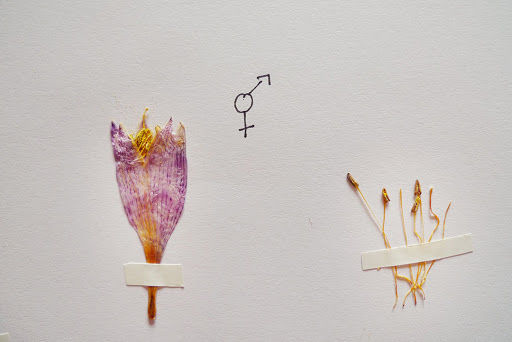
Queer Nature - Céline Baumann, 2019
Absolute or Relational?
Our scientific understanding of space and objects as independent, free-standing structures is grounded in Newtonian physics – following a philosophy of absolute theory whereby the object is defined in terms of itself, in independence. It remains one of the core ways we understand space and the objects and beings that exist within it, and frames how we visualise and understand this world. Relational theory instead views objects and systems in terms of their relation to others, advocating that it is this connection between the entity and its environment that gives it definition, context and meaning. This philosophy gives much more power to the forces that act between objects and beings, seeing the individual as part of the space and environment as one whole, affected by and existing co-dependently with its surroundings.
My mind is always blown when I think about our experience of solidity when we touch a resistant surface. Although we conceptualise solids as rows of individual atoms, an atom itself is actually 99.9999999999% empty space(!) Tables, plants and people are actually solidified just as much by the forces, flows and connections between the sub-atomic particles - the electrons constantly moving and ‘dancing’ around the protons. It is this flow of electrons which actually creates the resistance we experience as a solid when we touch an object.

Solidity as connection and flow as much as ordered resistance
A Watery Body or a Body of Water?
Astrida Neimanis considers this balance between the solid and the flowing, the individual and the collective through a beautifully poetic but grounded piece, exploring ‘hydrofeminism: or, on becoming a body of water’ (Astrida Neimanis, 2012). She uses the analogy of bodies, which are indeed comprised of 60-90% flowing water, in comparison to a lake or sea - a body of water. She explores solid vs fluid through an intersectional feminist lens, challenging the ‘phallogocentric enlightenment vision of the discrete, atomised and self-sufficient man’ to embrace a more elusive, fluid and interconnected idea of life.
Water is in a constant cycle around the Earth as a whole: drunk, filtered, excreted and shared across countries and species. It blurs the distinction between human and nonhuman, becoming this uniting ‘watery commons’ (Neimanis, 2012) beyond the bounds of the body and grounding us as part of the wider natural world, not separate or privileged to it. Our co-dependence on water as a resource and its flow through multiple watery bodies binds us as one connected ecosystem.
Despite this interdependent commons, the dissolution of the individual is not threatened, nor the discrete body we are more familiar with envisioning rejected. The body in fact serves as a membrane: viscous, whole and resistant to changing form, but still selectively permeable. The value of the individual entity, identity and experience is not diluted but contextualised.
This membrane, the space where the scale of the watery body interacts with the body of water as a whole, is a space of both connection and separation at once. A liminal space where the introduction of outsiders and merging of different ways of life are no longer a threat to our embodied self, but an ecotone of give and take. A selectively permeable zone where fresh and salt water can mix to create a new, rich and fertile swamp of brown.
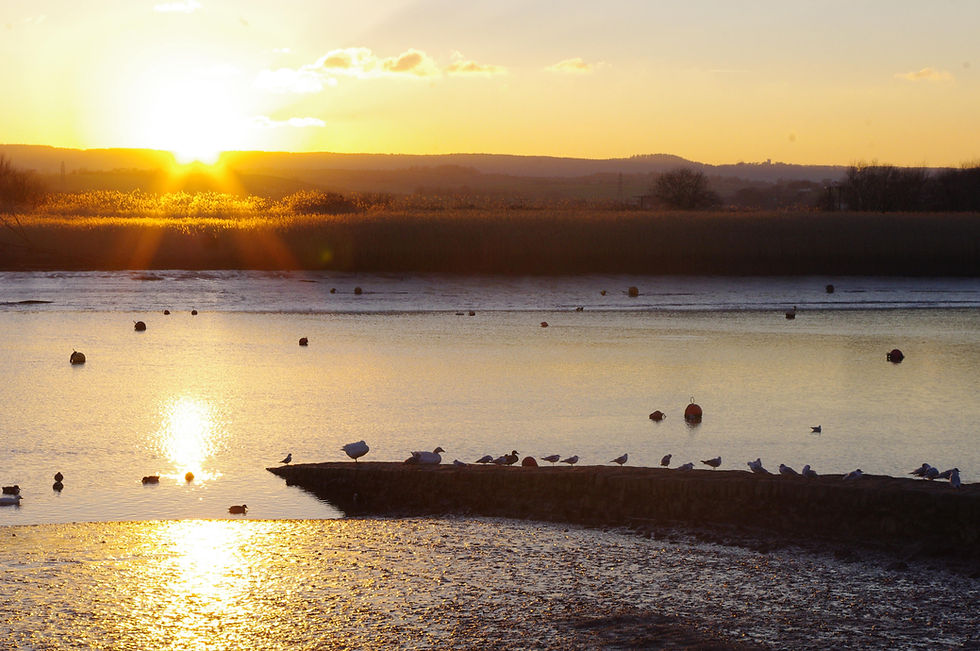
Topsham Estuary - the muddy browns where fresh water meets salty are what give it such a rich ecosystem
Conclusions | on the ground
These ideas around fluidity, connectedness and the space of the in-between have repeatedly resurfaced for me - in projects I explore through architecture and spatial design, in my ever-growing concern and learning around issues of inclusion and social justice and through my own lived experience in terms of how we connect and care for each other. They interweave and inform a lot of other, more specific thought paths I am exploring, but feel they settle in two avenues of thought for me so far:
1/ The importance of nuance, relativity and spectral thinking – challenging binary and absolute ways of thinking to embrace all that exists in-between.
2/ Balancing the individual with the collective – bounded embodiment and experience as part of a co-dependent, interconnected and diverse total embodiment.
"beware of anyone who marshals you into two distinct groups and puts one group in charge of another...
... instead lets all put sequins on and dance in the streets. Do not form two orderly queues, do not conform to this group or that and they won't know who to oppress"
- Deborah Frances-White, 2017
I feel more and more acutely aware of the dangers of an outlook dominated by black and white, boxed thinking; something I associate with a very patriarchal system of facts, absoluteness and authority. It traps me in conversations lacking nuance, oversimplifies the world and therefore jumps to conclusions and dismisses anything that can’t easily be categorised. The poetic side of me loves to see this as an overlooking of all the tones of grey, of colour and joy in between. The practical side, however, also sees the very real impacts it can lead to, dismissing not only the joy of the in-between, but the values, experiences and persons who ‘don’t conform’.
Its not a rejection of the masculine, the absolute, or the individualised entity I would argue for, but more an increased awareness and space for the feminine, the greys and browns, the relational, a holistic entirety. I often think of the balance between the individual and the collective in terms of the spheres of influence we hold. We have the greatest experience, understanding and impact on ourself – the mind and body we inhabit and control. However, we also have decreasing levels of influence on those around us – our behaviour and choices have a big impact on the family, friends, colleagues in our daily lives. We affect those we pass in the streets, those who hear us speak, or read our blog posts…
We all contribute to the collective societal forces that influence us all – our common beliefs, views, understandings, inequalities, societal structures.
It works both ways – we are impacted but we also have an impact. I like this model as it maintains the value of the individual, but also recognises the forces that hold us within the larger collective. It recognises the power of external influence and societal structures.
It allows for agency, responsibility and ownership, but also for mutual support and a helping hand.
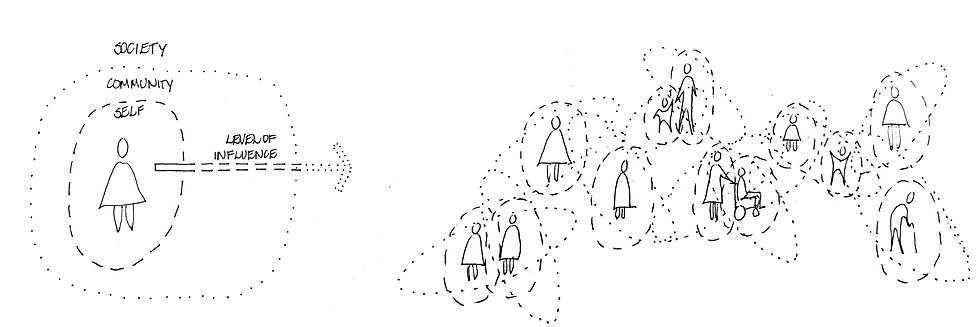
In discussing Neimanis’ text in particular, the desire for outcomes or solidity – almost an action list or to do list – came up, which I think falls into three areas of further consideration and application for me.
1/ Identity and Social Justice | thinking beyond the binary, inclusive and consistent anti-oppression
- liminality as a celebration of identity as spectral, intersectional, fluid and shifting
- the value of an inclusive, diverse whole without the dissolution of individual identity
- agency and impact as both an individual and as a collective within consistent anti-oppression - understanding the contributions we have to societal inequalities and where we can be a force for change
2/ Spatial Justice | spatial design as a tool for representing and enabling those whom are least valued
- liminal spaces as an ecotope - a selectively permeable merging of habitats – ecology with urbanity, queer culture and dominant culture, domesticity and public or work life
- the classic question: individual vs collective? private-public? shared resources or individual ownership?
- how to create spaces of activism - enable and encourage engagement with ‘the other’, spaces to encounter, reflect, learn, engage, change - spatial design as a tool for behavioural change
3/ Intra- and Inter-Personal Communication | our narrative of the world, with ourselves and with each other
- societal forces and the impact on the individual - exclusion, othering, 'madness'
- isolation and connection - importance of balancing indepence and interdependence, how to try to find that
- mental health – the balance between psychological and societal forces, self-directed support vs external support
- the importance of communication as a connection or commons between individuals
I’m sure you’ll hear more soon!
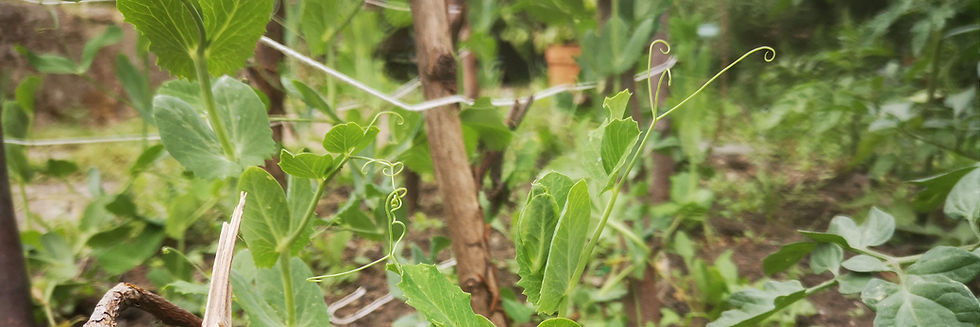
sometimes we all need a little help to grow – a liana to hold onto, a bee to fertilise us
For more, some ideas to start with:
http://www.swamp.lt/#commonism - The Swamp Pavilion, Venice Biennale 2018 - exploring ideas of a swamp as a commons, a shared space
https://phys.org/news/2017-02-atoms-space-solid.html - for more about the atomic level science of solidity
https://en.wikipedia.org/wiki/Absolute_theory - for more on absolute theory in physics
https://en.wikipedia.org/wiki/Relational_theory#Biology - on relational theory in physics
https://wellcomecollection.org/pages/Wuw0uiIAACZd3SO4 - Making Nature, Wellcome Collection 2016-17
https://futurearchitectureplatform.org/programme/80/celine-baumann-queer-nature/ - Queer Nature - Celine Baumann
Hydrofeminism by Astrida Neimanis



Comments